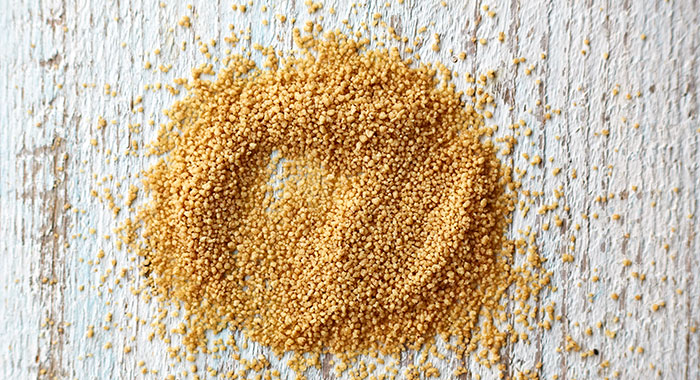
Pronounce it: Kah-moot
Kamut (Khorasan wheat) is an ancient variety of hard wheat, with a kernel that is twice the size of common wheat and a taste that is richer, creamier and nuttier. It is produced and sold under the trademarked Kamut® brand and is organically grown in over 40 countries and used in a host of foods worldwide. The grains are long and a rich brown in colour. Kamut is available in a variety of forms including whole grains, green kamut, flour, couscous (pictured) and bulgar wheat. It is fantastically versatile and can enhance everything from soups and stews to pilafs, salads and side dishes. Although Kamut is not gluten free, many people find it easier to digest. It is higher in protein and more nutritious than common wheat, containing more selenium, magnesium and zinc.
Prepare it
Depending on the form it comes in, Kamut can be added to breads, pasta, pilafs, side dishes, salads, soups and stews. Before cooking the whole grains, they can be rinsed and soaked for up to 24 hours to reduce the cooking time.
Store it
Like all grains, Kamut keeps best in an airtight container in a cool, dark place. To extend the shelf life, you can store it in the fridge but in this case, it is especially important that it is well sealed to stop it from absorbing moisture, or smells from surrounding food.
Cook it
After rinsing and soaking the whole grains, add three parts water to one part Kamut. Bring to the boil, before cooking for 45 minutes to 1 ¼ hours (depending on soaking time) or until tender, adding more water while cooking, if required. If you are making bread or pasta with Kamut flour, you may need more liquid than you would using standard wholemeal bread flour. For Kamut couscous, use one part couscous to one part water and leave to swell for 10 – 15 minutes or until tender.
Alternatives
Try spelt.
Be the first to comment on "Kamut"